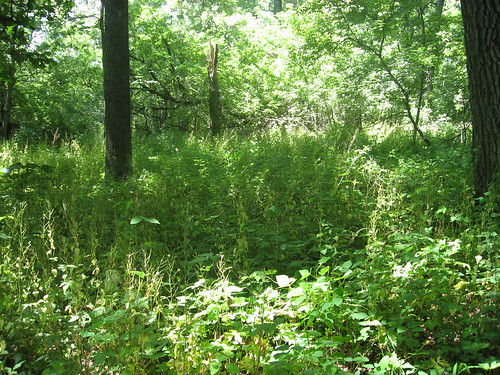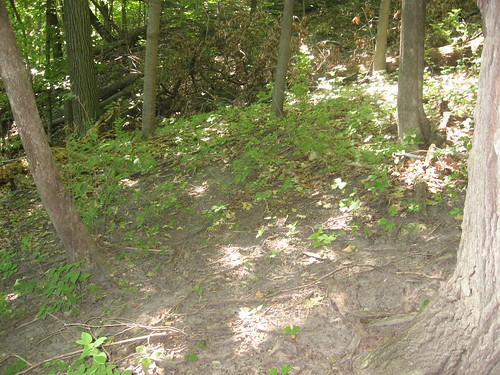While some dismiss the Midwest as "flyover states" and locals decry a brain drain that admittedly I am part of, non-human species seem to be arriving in the area in droves. Here's a pictorial tour of some of the exotic species that have recently settled in the area.

The yellow flower in the middle ground of the pictures is wild parsnip - a really nasty invasive exotic. It also causes a nasty "burn" when it comes in contact with your skin and leaves a brown mark that can last for years. (Renewable energy is quite a bit deal in this part of the Midwest - there are a lot of wind farms being developed and it's not entirely uncommon to see solar panels on houses and garages.)
This one is garlic mustard, which sounds yummy but outcompetes native wildflowers and forest flora in the eastern and Midwestern US.

Not all invasive exotics are plants. One of the exotics causing big problems in local forests is an earthworm. The worms are churning through the organic litter and humus on the forest floor at a much accelerated rate, and therefore disturbing the rooting and sprouting of forest plants. Then the forest gets a double whammy with increased deer browsing of the surviving plants. The result looks like this: bare soil and a sparse understory.

What about the emerald ash borer in the Northern Midwest. I live in Ann Arbor and the city had to cut down 30,000 trees that had been weakened by the borer. So far, replanting efforts have been very sparse.
People here in Michigan consider my homestate, Missouri, to be Southern, but we there consider it Midwestern, and down there there're problems with kudzu and armadillos.
I'm doing research on another invasive shrub species here in the Midwest (I won't say which one here, as it might be too easy to find me!). Invasive species are a HUGE problem, but also a fascinating subject. Places like Australia are especially interesting when it comes to exotic species.
I live in the Atlanta area, and perhaps the most destructive plant in this region is the dreaded Kudzu. Since it appears to be able to propagate without the assistance of bees, I'm a little concerned that we might be facing something of an ecological crisis in 20-30 years.
Vinca minor, periwinkle, is a major forest groundcover invader in Illinois. There ia highly invasive wetland grass; seior moment on the name. Russian olive, planted intentionally, is proving to be invasive.
I've seen DOR armadillos north of Springfield, MO.